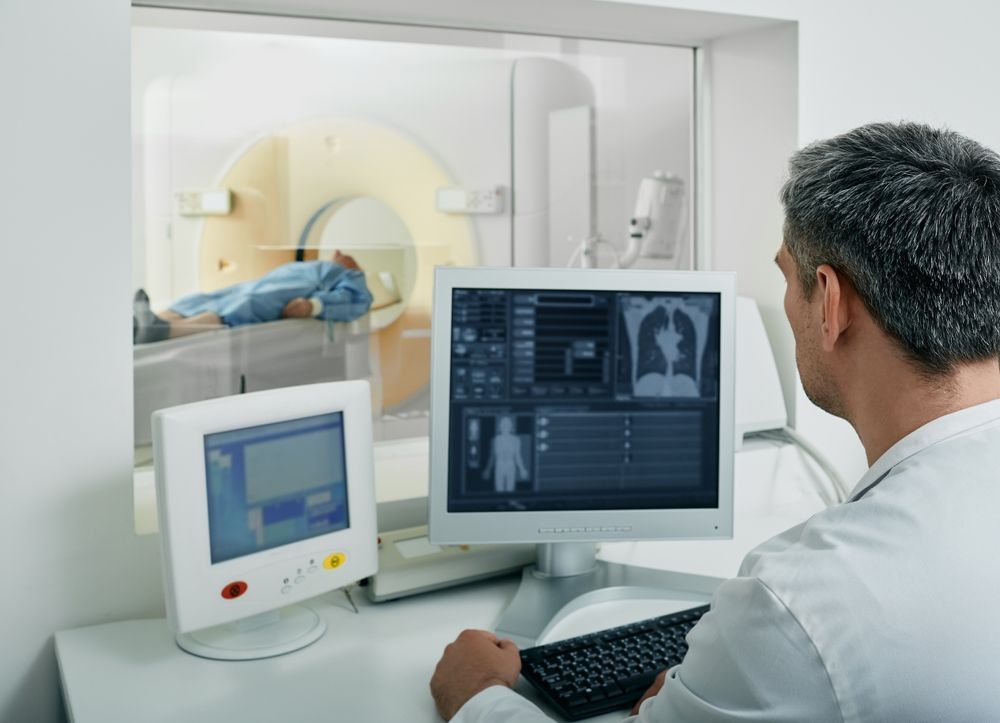Video Interview Tips for Live and Screening Interviews
Video interviews have gained popularity in recent years for screening and live interviews. Whilst preparing for your interview, there are a few key factors you must consider to set the scene for a good performance. This article addresses the main technical issues, often overlooked.
Video interviews are steadily replacing the old methods of telephone and physical interviews. The ease of set up and execution, and the obvious benefit of saving time by reducing or eliminating travel, have spurred their popularity and acceptance. As a candidate for a job application, you must know how to handle them well to succeed.
The Types of Video Interviews
Video interviews are used to conduct two main types of interview:
- solo interviews with pre-recorded questions, usually used to screen candidates at the start of the recruitment process prior to shortlisting for interviews.
- live interviews with a single interviewer or a panel.
Solo Interviews
Solo interviews are the format which candidates find most disconcerting. There is no one to interact with and as a candidate, you will find yourself logging in to the interview and then gazing at a blank screen or video of yourself. Questions are predetermined, pre-recorded and usually standardised for each job application process and are presented in oral recorded or written format and sometimes both.
Solo interviews are usually deployed at the early stages of a recruitment process and are designed to screen candidates according to defined criteria. The questions are usually straightforward and easy to answer. Five to ten questions are normal with a time frame of 1-2 minutes for responses to each question. Interviews are recorded live and there is often an opportunity to redo the recordings of your responses if you are unhappy with your initial recording.
Once complete, the video of the interview will be reviewed by the employer or recruiter and candidates who do not meet the required criteria are eliminated from the recruitment process. The elimination criteria are generally broad. Employers at this stage are aiming to exclude candidates whose personal presentation and communication skills are poor.
If you are asked to take a solo interview as part of a job application, you should prepare as you would for a live interview ensuring that your background, dress and demeanour are professional. Solo interviews are conducted on employer owned and branded video interview platforms. You will be given credentials to access the interview and allowed to take it in your own time. Mobile devices can be used for these interviews.
Some key tips:
- Ensure that your mobile, tablet or lap top has sufficient battery charge before starting the interview. There is nothing worse than a power failure halting progress. It looks unprofessional and gives an impression of poor organisational ability.
- Use a green screen or professional looking uncluttered background with adequate lighting.
- Use a microphone and ensure adequate speaker audio quality.
- Relax and read the question aloud before responding then record your answer within the given timeframe. Concise and relevant responses are more effective than lengthy, verbose answers.
- If you are unhappy with your initial response, you will in most interviews, have the opportunity to re- record.
- Once all questions are dealt with, submit your interview.
The Technique for Solo Interviews
It is important to bear in mind that solo interviews are short and uncomplicated and the employer is aiming to address specific issues or seek facts. We recommend the following three step process:
- Understand the question: read or listen to the question posed by the employer and ensure that you have understood the question and its purpose with respect to the information or issues which the employer wishes you to discuss. This may be something simple such as your availability to start work or your reasons for wanting the job or your reasons for wanting to work in a particular location. However, more complex issues can be raised about your specific skills in a technical or general capacity.
- Prepare a clear and concise response: once you have defined the issues raised by the employer, prepare your response to address these clearly and concisely. There is no need to talk excessively to fill the allocated time. It is the facts which are important and you should ensure that these are clearly delivered.
- Record your response: Once you have rehearsed your response, record it speaking clearly. You should start your recording by reading the question and then provide your response. If you are not happy with your reply, you may have the opportunity to re- record it.
Once you have completed these steps for each question, you can submit your interview and await for the review and feedback.
Live Interviews
Live interviews are now standard for most job interviews; certainly for the first interview which may be followed up with an on site interview if travel permits. For international job applications, site visits have largely been eliminated due to the cost and recent restrictions on international travel.
Live interviews are conducted with an interviewer or a panel of interviewers who may be geographically disparate. The technology used varies. Microsoft teams and zoom are the most commonly used, accessible and familiar to most people. Some employers have their own technology platforms for interviews. Most of these are straightforward to use. Skype is rarely used now. You do not need to have a personal account with any of these video platforms nor do you need to download the software applications. The employer will send you a weblink for direct access.
A live remote interview can be conducted in the same way as a regular interview but there are a few additional issues of which you should be aware. Firstly, you are reduced to using just two of your senses - eyes and ears and you must train them to be effective observers. Instead of interacting face-to-face, there is now a screen separating you and the interviewer. You are still talking live but your eyes can only see as much as the camera can, and your ears are subject to the mercy of the audio quality.
Secondly there are five other factors; technology, background, clothing, body language and attitude. Only the first two are exclusive to the remote, video linked setting.
1. Technology
The employer will send you a connection link before your interview. Check that the link works by clicking upon it and ensure that it links to the correct interview. Occasionally employers make mistakes and send out the wrong links. If the link is not working or links to the wrong interview, advise the employer or recruiter in advance so that this can be corrected in time.
You should check the functioning of your hardware and software in advance. Ensure that your computer or mobile device is running the latest software and drivers, has anti viral protection and that audio and camera systems are working effectively. You may consider using an external camera and speakers if the ones on your device are insufficient. Ensure that your webcam is at eye level.
If you have downloaded the applications for zoom or teams, you should check that you have the latest versions of these applications. You can select an appropriate background screen if you wish to obscure your own actual physical background.
Ensure that you have an adequate broadband or data connection for the interview.
2. Background
The video back ground is important and often overlooked. You must ensure that it is professional, uncluttered and does not overwhelm or detract from your presence. Remember that you are the main focus of the camera and screen and not the room behind you. A professional looking office is ideal. Avoid sitting on a sofa or arm chair which looks comfortable but too casual and ensure that there is no clutter behind you which may give the impression of poor organisational ability.
Ensure that your lighting is adequate but not too harsh or strong. Lights should be in front of you to illuminate you but not drown you out.
Remove children and animals from the location and ensure that the area is quiet and you will be undisturbed.
3. Clothing
A smart and professional appearance is essential, at least from the waist upwards. Avoid casual clothing such as t shirts, pyjamas and sweat shirts and dress formally in colours which are sufficiently strong to ensure that you stand out from the background whilst not so bright as to be overwhelming.
4. Body Language
Body language is a silent orchestra. It is a vital form of communication, but most of it happens below the level of conscious awareness. People constantly give clues to what they are thinking and feeling by means of non-verbal messages; body movements, facial expressions, vocal tone and volume, and other signals which are collectively known as body language. Micro expressions (brief displays of emotion on the face), hand gestures, and posture all register in the human brain almost immediately, even when a person is not consciously aware of them. An individual's body language can therefore strongly influence the perceptions of others
According to psychological research, approximately 55% of our communication is non-verbal, 38% derives from our tone of voice, and just 7% is attributed the the actual words spoken. Facial expressions, gestures and tone of voice are therefore important.
During an interview you should pay close attention to:
- range of facial expressions - a high variety of expressions and accompanied voice tone usually indicate an active personality.
- posture - maintain an upright posture and don't slouch
- eye contact - maintain good eye contact. Not being able to do so is a tell-tale sign of communication difficulty or signals you may be reading notes on the screen instead.
- maintain interaction - this is a must! (Some interviewees often receive feedback showing a lack of eye contact; this is because they only look at the screen, not the webcam. To prevent this from happening, place your webcam right above your eye level.)
5. Attitude - Stay Both Professional and Personable
Ensure punctuality and log in to the software at least 15 minutes before your interview is scheduled to start to establish that the technology is still in good working order, your lighting and audio work well and your background and personal appearance are presentable.
Show a genuine interest in the job and the interview questions and provide clear and concise responses. Ask relevant questions and maintain eye contact with the web camera. Be patient with any technical issues which arise at either end.
We hope these tips help with your job interviews and good luck!
2 September 2021
Share this post on Social Media
Leave a Comment
SEARCH JOBS
Ready for a change? Whether you’re looking for higher compensation, greater autonomy, a better work-life balance, or just a change in scenery, we have job opportunities in wonderful locations across the world. Start your medical or dental job search today and embark on your next career move.
SIGN UP FOR JOB ALERTS
We believe everyone deserves to find their dream job. Be the first to hear about new practice opportunities in exciting locations across the world Simply sign up for job alerts in your chosen field, and we will email you when a new job in your specialty becomes available.


















